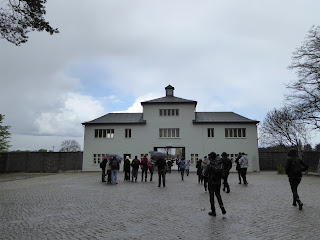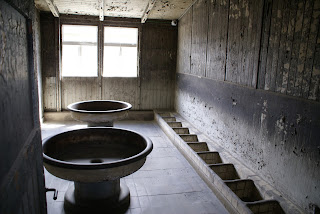The
Sachsenhausen is a concentration camp found just outside Berlin in Oranienburg and today is a memorial that you can visit for free.
It was built in 1936 and was the first new camp to be
established after Heinrich Himmler was appointed Chief of the German Police. The
significance of this camp is that it was conceived by the SS architects as the
ideal concentration camp setting and served as a model for other camps. It
later became the administrative headquarters for all German concentration camps
within the German sphere of influence.
 |
| The head office where all camps were operated from |
 |
| Homes of high ranking SS officials |
Between
1936 and 1945 more than 200,000 people were imprisoned in Sachsenhausen. At first the prisoners were mostly political opponents of
the Nazi regime but then they became others based on race or what the Nazis
deemed biologically inferior. In addition to those that died during their
imprisonment, thousands of other prisoners died during the death marches following
the evacuation of the camp at the end of April 1945. Those that remained at the
camp were liberated by Soviet and Polish soldiers.
 |
| Walkway to the main entrance |
 |
| Entrance and main watchtower |
 |
| Part of memorial before you enter the camp |
As mentioned you can tour the site for free - I really respect this decision by Germany to have Holocaust memorials and museums free of charge. It includes some of the original buildings as well as information displays and memorials to those that suffered or died.
The few remaining buildings are bunks and a medical building. The information displays are found inside these.
 |
| Medical building |
Towards the back of the camp there is a memorial.
And just beyond the walls is where the killings took place.
 |
| Where some were shot |
 |
| What is left of the ovens |
This is
the second time I have visited a concentration camp and the experience remains
disturbing. It seems weird to take photos and share them but at the same time,
it’s important that what took place does not get lost in history. . .






















No comments:
Post a Comment